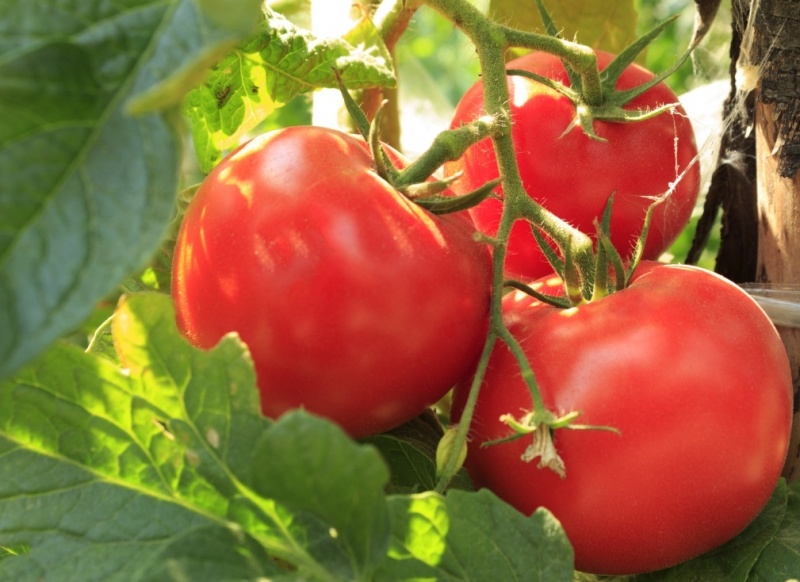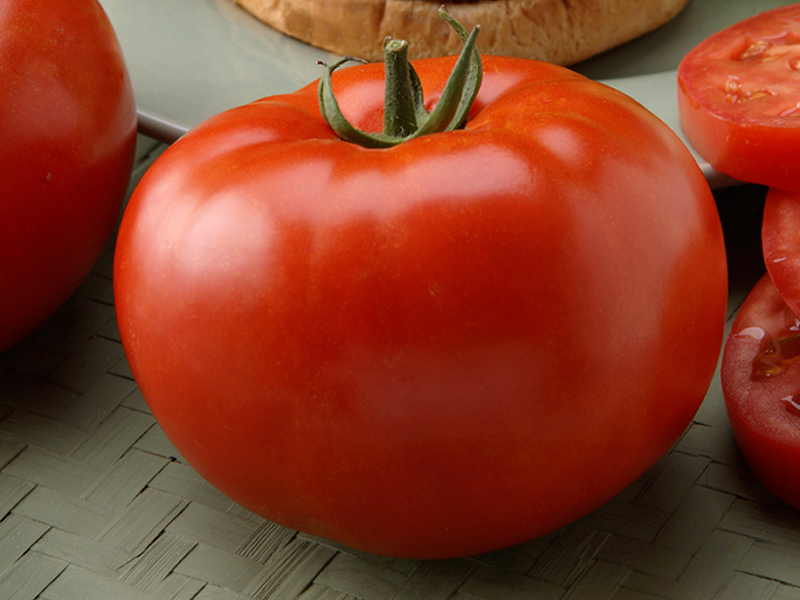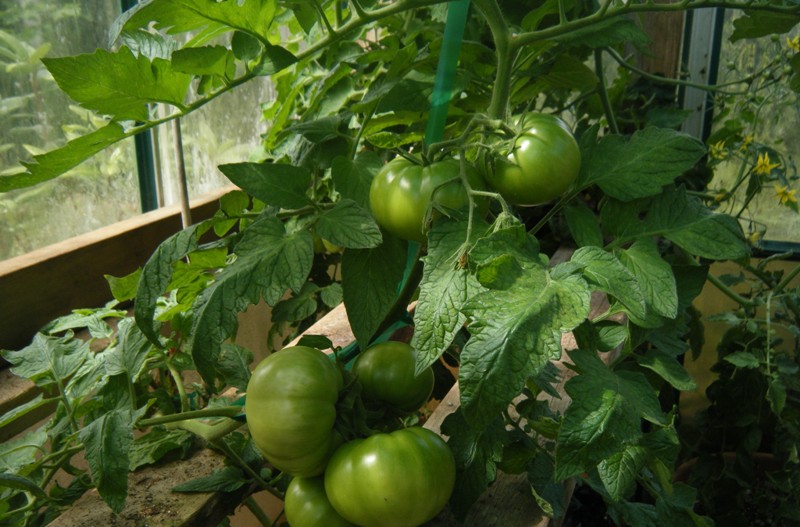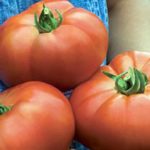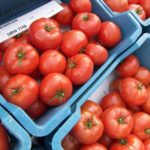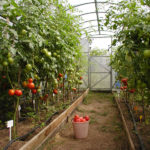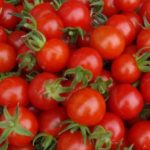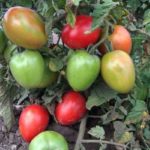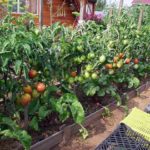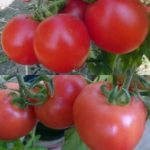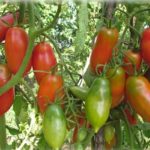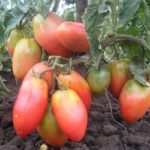Breeding plant species are popular all over the world and sometimes produce unexpected results. The Big Beef F1 tomato, born abroad, takes root well in other climatic conditions. Productivity does not suffer; its basic qualities remain unshakable. The native environment for these tomatoes is a humid maritime climate. When grown in a different environment, a tomato tends to quickly gain growth and take the most from nature.
The homeland of the hybrid is Holland, a country with cool but humid summers. Our foreigner's name translates from English as a big piece of beef. Apparently, in a nutshell, breeders tried to convey to the consumer the basic properties of this species. The color of a tomato when cut actually resembles a fresh piece of meat.As reviews say, it is larger in size than many tomatoes in its family. This definition does not apply to taste: they have not yet learned to grow meat in garden beds.
Characteristics of the species
A record holder in weight, precocity and immunity to diseases, this is a real giant in its family; it has also surpassed the Sasher F1 variety, with which it appeared almost at the same time.
Properties of the culture that determine the popularity of this species:
- The color of the fruit is classic. As the Beef Beef tomato grows, it gradually changes color from brown-green to orange and bright red.
- The taste is sweetish with sourness.
- High early maturity. The fruits can be harvested 70–75 days after planting the seedlings. You can safely continue growing tomatoes until late autumn, picking fresh tomatoes from the bushes.
- The weight of mature fruits reaches one kilogram. A real storehouse of vitamins and nutrients. One tomato can make an excellent salad for the whole family.
- Tolerates transportation well. Covered with a thick and fairly durable shell. Big Beef tomatoes travel long distances easily. The peculiar sections inside the fruit, where the seeds are located, act as stiffening ribs and reinforce the original shape of the product.
- Does not lose useful elements and moisture when properly stored. Gradually ripens in a cool, dark place. Some vegetable growers specifically adjust the time of harvesting, dosing portions of products as they are canned.
The Beef Pink Brandy F1 variety has similar properties - it produces equally large fruits that are similar in taste. Ideal for preparing salads, they are eaten fresh, canned and even fried. Varieties can be distinguished by shape and aroma.Apparently, the word Brandy appeared in the name to emphasize the aromatic properties of the new variety.
Conditions of detention
Developing a crop in a greenhouse is preferable to open garden beds. Holland has a humid and temperate climate. Summer there is short and warm. The temperature stays around 18 degrees. This is ideal, but in practice sometimes westerly winds from the sea bring bad weather.
According to the description of Big Beef tomatoes, they can be grown by following a few tips:
- Using a greenhouse will have a beneficial effect on the growth of the bush, the formation and development of fruits. Smooth conditions and the absence of sharp temperature fluctuations will force the plant to direct all its vital forces to development. This will undoubtedly affect the yield.
- Growing in open beds is preferred for areas with hot and humid climates. Warm sea air is perfect for Big Beef F1, as it reproduces its native environment. The plant is genetically tuned to a certain climate and does not tolerate sudden changes in temperature.
But the characteristics and description of the final product when growing a crop “in the wild” are somewhat different from those in a greenhouse:
- The plant becomes stronger and better fights various diseases.
- The growing season is shortened.
- After removing part of the fruit, a new ovary forms faster.
Sometimes other varieties of tomatoes are grown under the same roof. This method is useful for testing the properties of different crops. For example, our Big Beef's Dutch sister, Mona Beef, will get along well with him in the same greenhouse. The plants do not conflict with each other, since both belong to the same nightshade family and were even created at almost the same time.
Compound
But what's good about tomatoes? What substances help improve metabolism and the quality of life itself?
We offer a brief description of the variety regarding the content of useful substances:
- Carotene. Improves vision, the functioning of the body's immune system and gastrointestinal tract. Many athletes consume large amounts of beta-carotene during periods of intense exercise. It is found naturally in tomatoes.
- Amino acids are the building blocks of the body. Some of them are generated, others can only be replenished from food. A high content of amino acids was found in Semko tomatoes, an extremely successful hybrid. Tomatoes contain up to 18 amino acids necessary for the body to function normally.
- Sugar and fructose are pure energy and the favorite food of every cell. The Big Boy tomato contains a large amount of fructose - it has almost the same sweetish taste as the popular Cherry tomatoes.
- A complete set of vitamins and microelements. Tomatoes are especially rich in vitamins A, C and group B. Necessary for the formation of metabolic processes.
- Antioxidants. Lycopene is a powerful anti-cancer agent. Rejuvenates the body. They are first on the list of antioxidants necessary for the normal functioning of the entire body.
The Dutch supply many varieties of tomatoes to different parts of the world. An interesting variety for gardeners may be Big Tasty F1, which has similar properties. This is a real hero of tomatoes.
This group includes a number of varieties with minor differences. Among the giants of the tomato world, one can highlight the Big Negro F1 tomato, which has an original dark chocolate color.
Dutch hybrids are surprisingly resistant to fungal diseases. New varieties are not always strong enough for soil bacteria, even if the plant is grown in a greenhouse and does not have strong immunity. Nature does not immediately adapt to the appearance of a new variety.
Among the common diseases to which the new species is resistant Dutch tomatoes, we can highlight:
- tobacco mosaic virus;
- Alternaria stem cancer;
- cladosporiosis;
- gray leaf spot;
- parasitic disease root-knot nematode;
- verticillium and fusarium wilt.
The vitality of the plant is so great that it does not allow various microorganisms to prevail over it. It has a strong immune system, actively evaporates phytoncides using a powerful root system. Fights pests. The intense smell of tomato tops alone repels pests and insects. It does not tolerate proximity to other plants, even its own family, and begins to fight them.
This strong and powerful variety will surely appeal to gardeners and will be added to the collection. A descendant of the legendary variety Bull's Heart, a true Dutchman, takes root well in our conditions and brings a lot of joy in the process of growth and fruiting.

